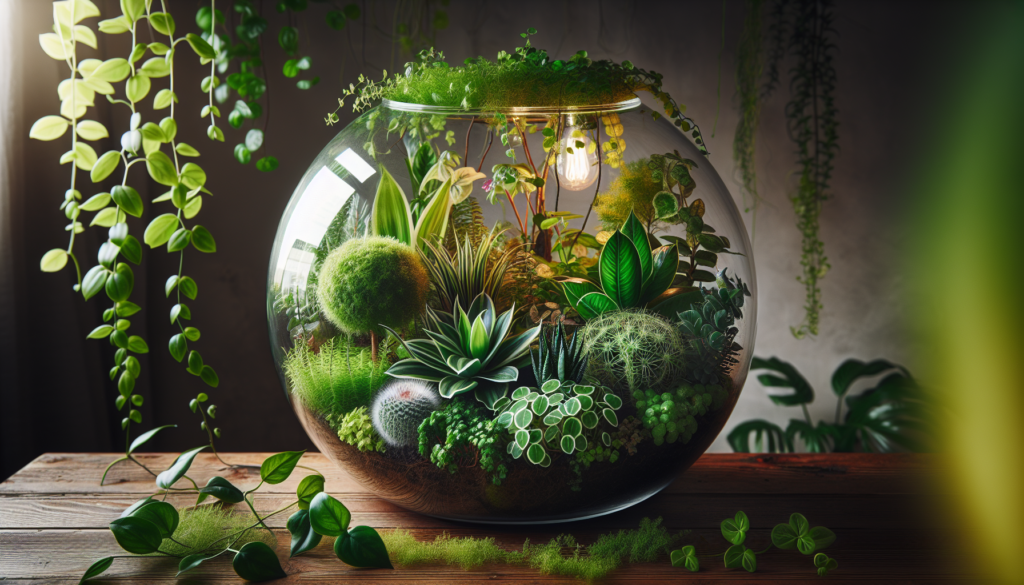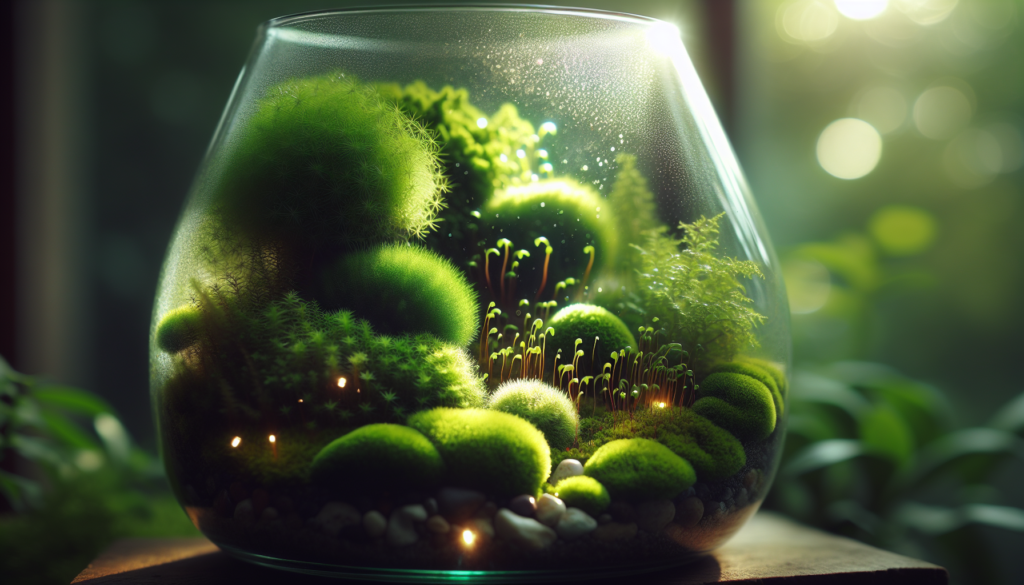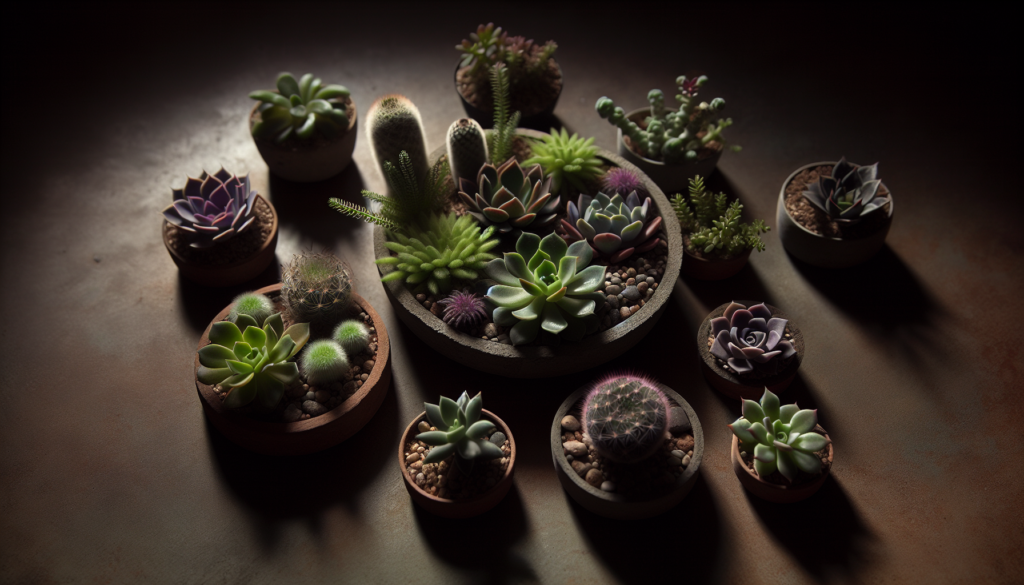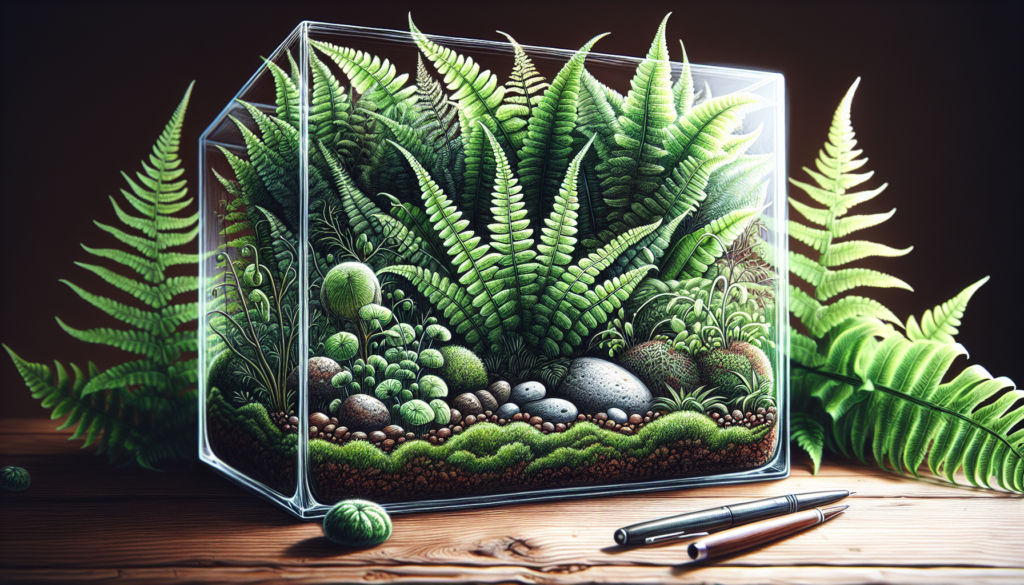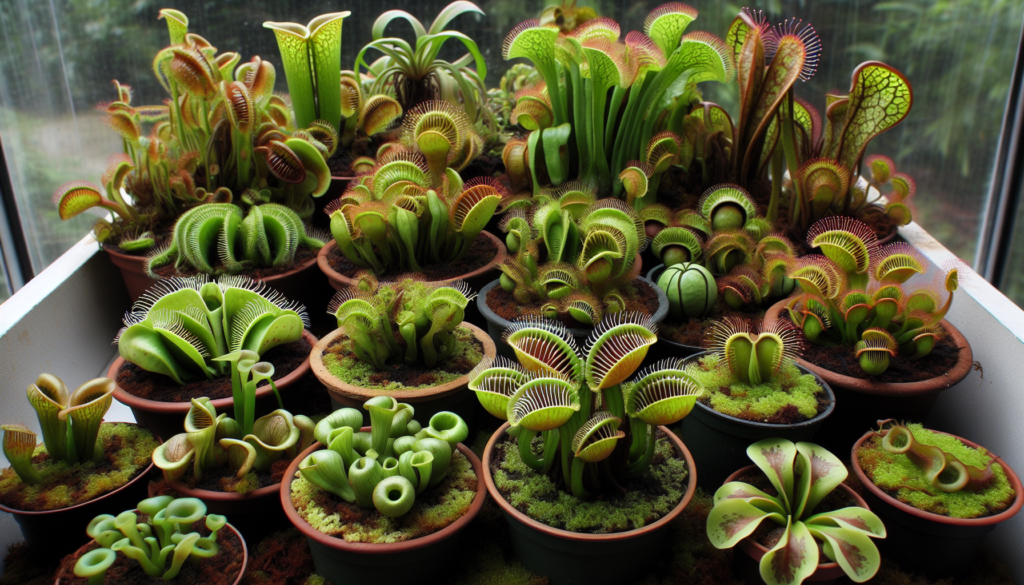Creating a terrarium is like building a tiny world, and choosing the right plants is key to making it thrive. Let’s break down what you need to know to make your mini garden a success.
Open vs. Closed Terrariums
Terrariums come in two flavors: open and closed. Each has its own vibe and plant preferences.
Open Terrariums are great for plants that like it dry, like cacti and succulents. These setups let air flow freely and keep humidity low, just like the desert. If you want more deets on plants that love open terrariums, check out our guide on succulent plants for terrariums.
Closed Terrariums are like little rainforests. They trap moisture and create a humid environment, perfect for plants like artillery ferns and polka dot plants. For a deeper dive into plants that thrive in closed terrariums, see our article on best plants for closed terrariums.
Lighting Needs for Terrarium Plants
Light is life for plants, and getting it right is crucial. Different plants have different light needs, so let’s break it down.
Open Terrariums usually need low to medium light. Think of the kind of light you’d get in a bright room but not direct sunlight. Too much direct sun can scorch your plants. For more tips on lighting, check out our article on terrarium plants for beginners.
Closed Terrariums do best with indirect light. Direct sunlight can turn these little greenhouses into saunas, which isn’t great for your plants. If natural light is lacking, consider using LED grow lights. For more on this, see our article on terrarium plants for reptiles.
Remember, balance is key. Too much or too little light can mess with your plants’ mojo. Keep an eye on them and adjust as needed.
Top Plants for Closed Terrariums
Closed terrariums are like little tropical getaways for your plants. Here are some stars that shine in these humid, low-light environments.
Peperomia and Moss
Peperomia is a low-maintenance champ with a variety of leaf shapes and colors. It’s perfect for small spaces. Moss adds a lush, natural look and helps keep things moist.
Nerve Plants and Ferns
Nerve plants (Fittonia) have colorful, patterned leaves that pop in a terrarium. They’re compact and love humidity. Ferns, with their delicate fronds, add a touch of elegance and thrive in the same conditions.
African Violet and Miniature Begonia
African violets bring vibrant flowers to the mix, while miniature begonias add small leaves and colorful blooms. Both are great for adding a splash of color to your terrarium.
These plants, including peperomia, moss, nerve plants, ferns, African violets, and miniature begonias, are all stars in the humid world of closed terrariums. For more plant ideas, check out our article on best plants for closed terrariums.
Best Plants for Large Terrariums
Got a big terrarium? Here are some plants that will thrive and add character to your space.
Spider Plants and Golden Pothos
Spider plants and golden pothos are known for their trailing vines, which create a cascading effect. Spider plants have long, arching leaves with variegated patterns, while golden pothos has heart-shaped leaves in green and yellow. Both are adaptable and low-maintenance, making them perfect for large terrariums.
Prayer Plants and Calathea
Prayer plants (Maranta leuconeura) and calathea are known for their stunning foliage and unique patterns. Their leaves fold up at night, resembling hands in prayer. They thrive in medium to bright indirect light, making them ideal for large terrariums.
Neanthe Bella Palm and Rattlesnake Plant
Neanthe Bella palm (Chamaedorea elegans) and rattlesnake plant (Calathea lancifolia) add a tropical touch. The palm has delicate, feathery fronds, while the rattlesnake plant has striking, wavy leaves. Both prefer bright indirect light and moist soil.
By adding these plants to your large terrarium, you’ll create a lush, vibrant indoor oasis. For more tips, check out our article on terrarium plants for beginners.
Terrarium Plant Care Tips
Keeping your terrarium plants happy and healthy is all about the right care. Here are some tips to keep in mind.
Watering Right
Closed terrariums need little to no watering since they recycle water. Open terrariums should be watered every 3-6 weeks based on the plants’ needs. Overwatering can lead to root rot, so it’s better to underwater than overwater. Check the soil’s moisture by sticking your finger about an inch deep. If it feels dry, it’s time to water.
Pruning and Maintenance
Regular pruning keeps your plants looking good and healthy. Trim back plants that touch the sides or top of the terrarium. Use long aquarium scissors and tweezers for precision. Remove any diseased or dying plants promptly to prevent the spread of disease.
Cleaning the Glass
Keep the glass clean to let light in and showcase your plants. Use a damp cloth or moist paper towel to dust the outside. For the inside, use distilled water or rainwater sparingly. Avoid harsh chemical cleaners.
By following these care tips, you’ll create a thriving mini-ecosystem. Tailor your care routine to the specific needs of your plants, and your terrarium will bring beauty and greenery into your home for years to come.
Terrarium Design and Plant Selection
Designing a terrarium is all about mixing and matching plants to create a stunning display. Here are some tips to get you started.
Upright, Trailing, and Mid-sized Plants
Mixing plants of different heights and growth habits creates a visually appealing terrarium. Upright plants like ferns and miniature palms add vertical interest. Trailing plants like ivy or pothos cascade down the sides, creating a lush look. Mid-sized plants like fittonia or peperomia fill out the space.
Adding Unique Elements like Flowering Plants
Flowering plants like miniature African violets or orchids add a pop of color. Carnivorous plants like pitcher plants or venus fly traps add visual interest and natural pest control.
Design Tips
- Choose plants that fit comfortably without overcrowding.
- Place taller plants at the back and shorter ones at the front.
- Use a mix of textures and leaf shapes for variety.
- Arrange plants in groups to mimic a natural landscape.
- Leave space for plants to grow.
- Ensure proper airflow to prevent overcrowding.
By selecting the right plants and arranging them thoughtfully, you can create a stunning terrarium. For more tips, check out our article on terrarium plants for beginners.
Keeping Your Terrarium Healthy
Maintaining a healthy terrarium involves proper placement, monitoring plant health, and troubleshooting common issues.
Proper Placement
Closed terrariums thrive in bright, indirect light, while open terrariums prefer well-lit areas without direct sunlight. Avoid placing terrariums near heat sources like radiators or heating vents.
Monitoring Plant Health
Regularly check for signs of overgrowth, disease, pest infestation, or nutrient deficiencies. Remove any unhealthy plants promptly to prevent the spread of disease.
Troubleshooting Common Issues
- Excessive moisture: Reduce watering and ensure proper drainage.
- Mold or fungal growth: Increase ventilation and adjust watering practices.
- Yellowing or wilting leaves: Adjust lighting, ensure sufficient nutrients, and evaluate watering schedule.
By properly placing your terrarium, monitoring plant health, and troubleshooting issues, you can maintain a healthy and thriving mini garden. For more information, refer to our article on best plants for terrariums.

